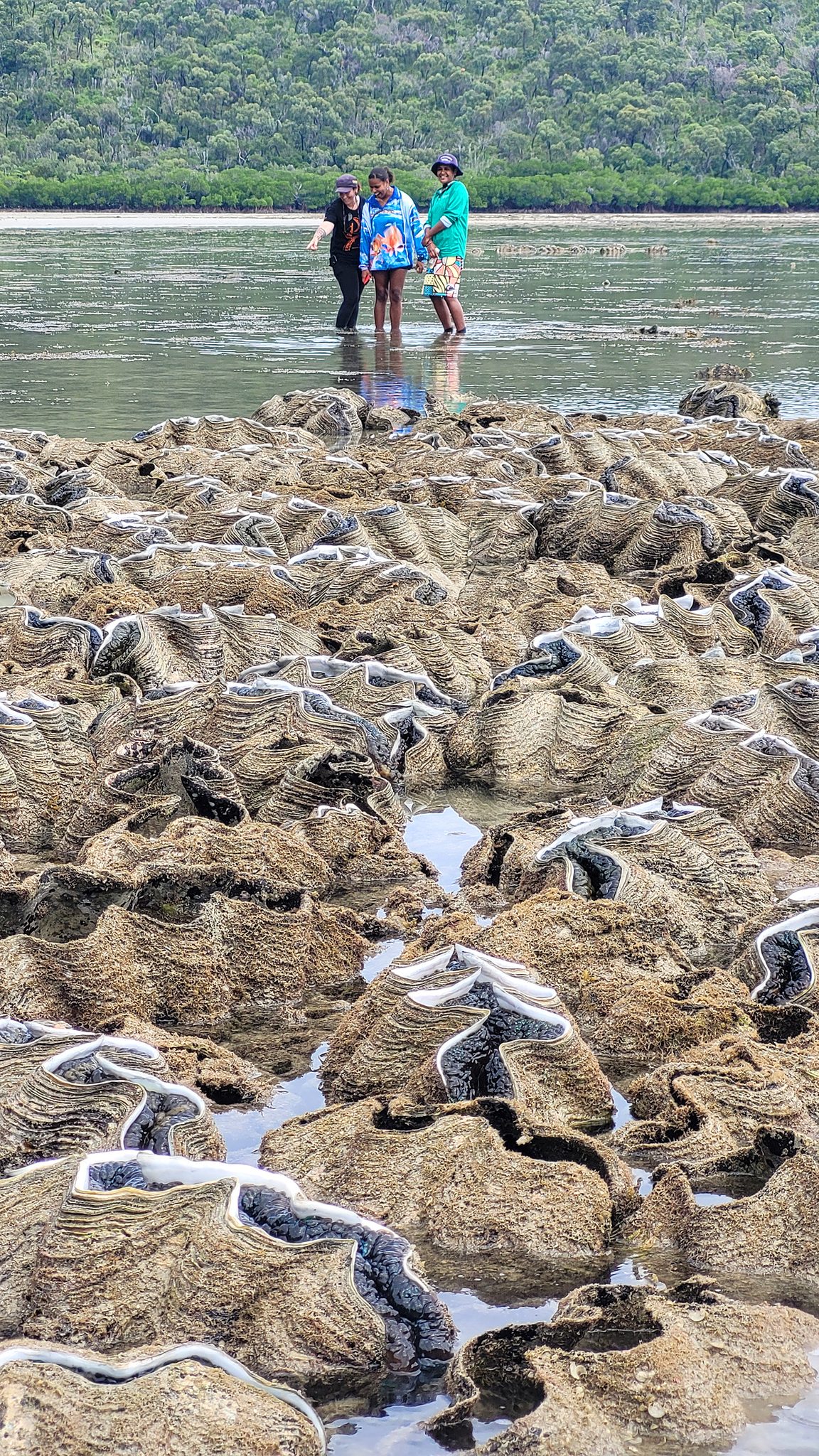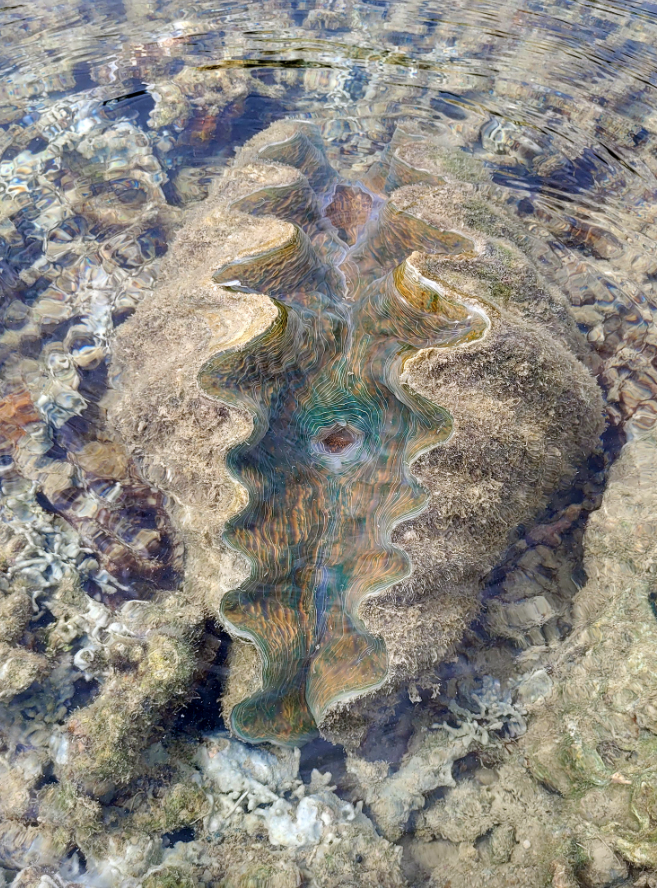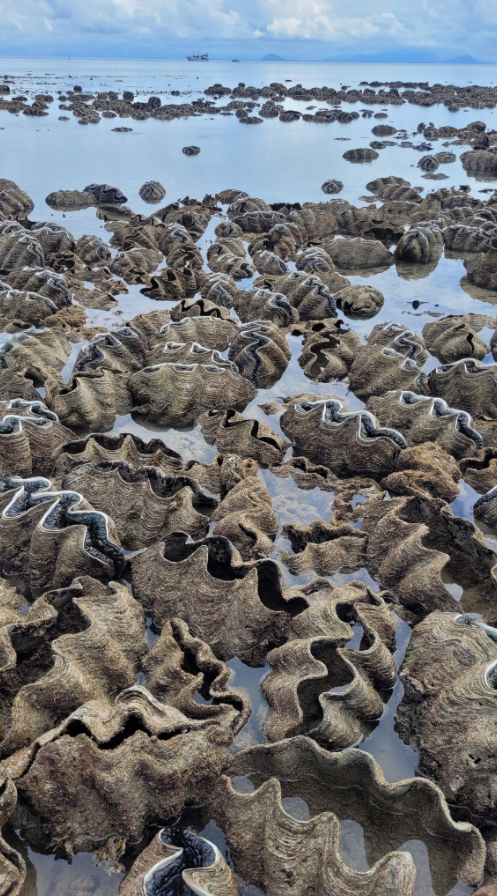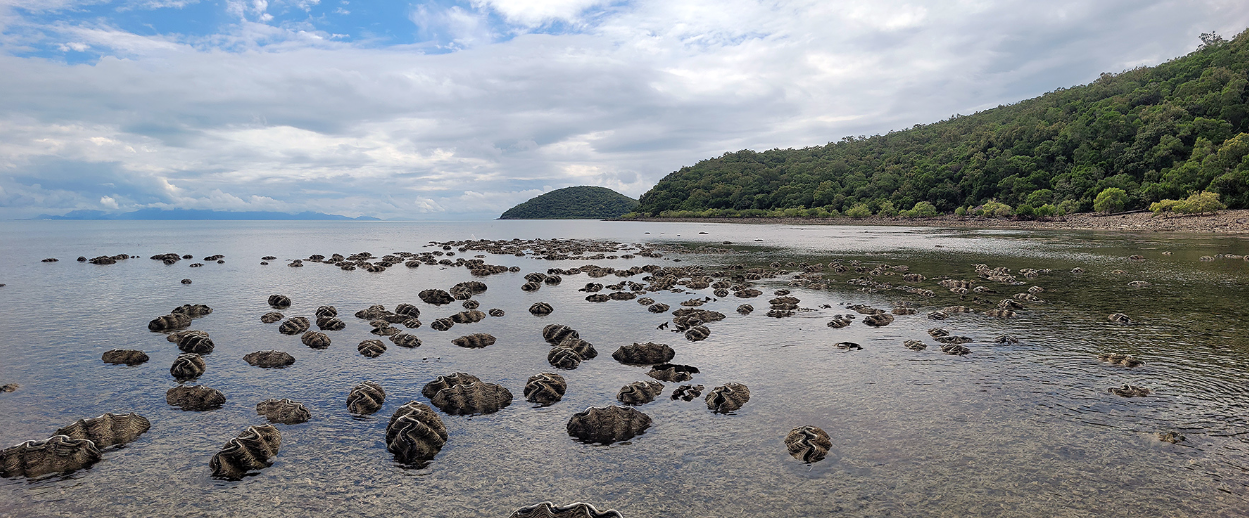Sea Women Great Barrier Reef has posted some breathtaking pictures of over 100 Giant Clams, Tridacna gigas, that were recently exposed in a low tide caused by the New Moon. The clams are situated at Goolboddi on Orpheus Island, Queensland, and were planted there as part of an ACIAR-funded Giant Clam Project that ran there in the late 1980s and into the early 1990s. The clams were cultured from wild broodstock and the methods developed during the Giant Clam Project were exported to many other nations around the Pacific and Southeast Asia.


Sea Women Great Barrier Reef
The women photographed are part of the Sea Women Great Barrier Reef program, which The Coral Sea Foundation initiated in 2022 to facilitate training and networking of First Nations women from around the Coral Sea arc. The program builds on the success of the award-winning Sea Women of Melanesia training program in Papua New Guinea and Solomon Islands and operates from the Coral Sea Foundation base on Yunbenun (Magnetic Island) with the consent of the Wulgurukaba traditional owners.
The program aims to strengthen the connection between Indigenous women and their traditional Great Barrier Reef sea country. Objectives include empowering indigenous women from the Great Barrier Reef with the practical marine science skills and the marine conservation knowledge they need to be more effective advocates for sustainable management of their marine resources, both within their communities and the broader society. It also aims to forge new links between indigenous Sea Women around the Coral Sea arc, from the Great Barrier Reef to the Torres Straits, Papua New Guinea, and the Solomon Islands.
Tridacna gigas has been listed under CITES Appendix II since 1985. They can weigh more than 200 kilograms (440 lb), measure as much as 120 cm (47 in) across, and have an average lifespan in the wild of over 100 years. They have become endangered to over-collection and exploitation, and are collected for food, their shells, and the aquarium market. As for this cultured Giant Clam garden, all we can say is wow, and no PAR meter is necessary to read just how much light these now 40-year-old clams must be receiving, baking in those shallows.




